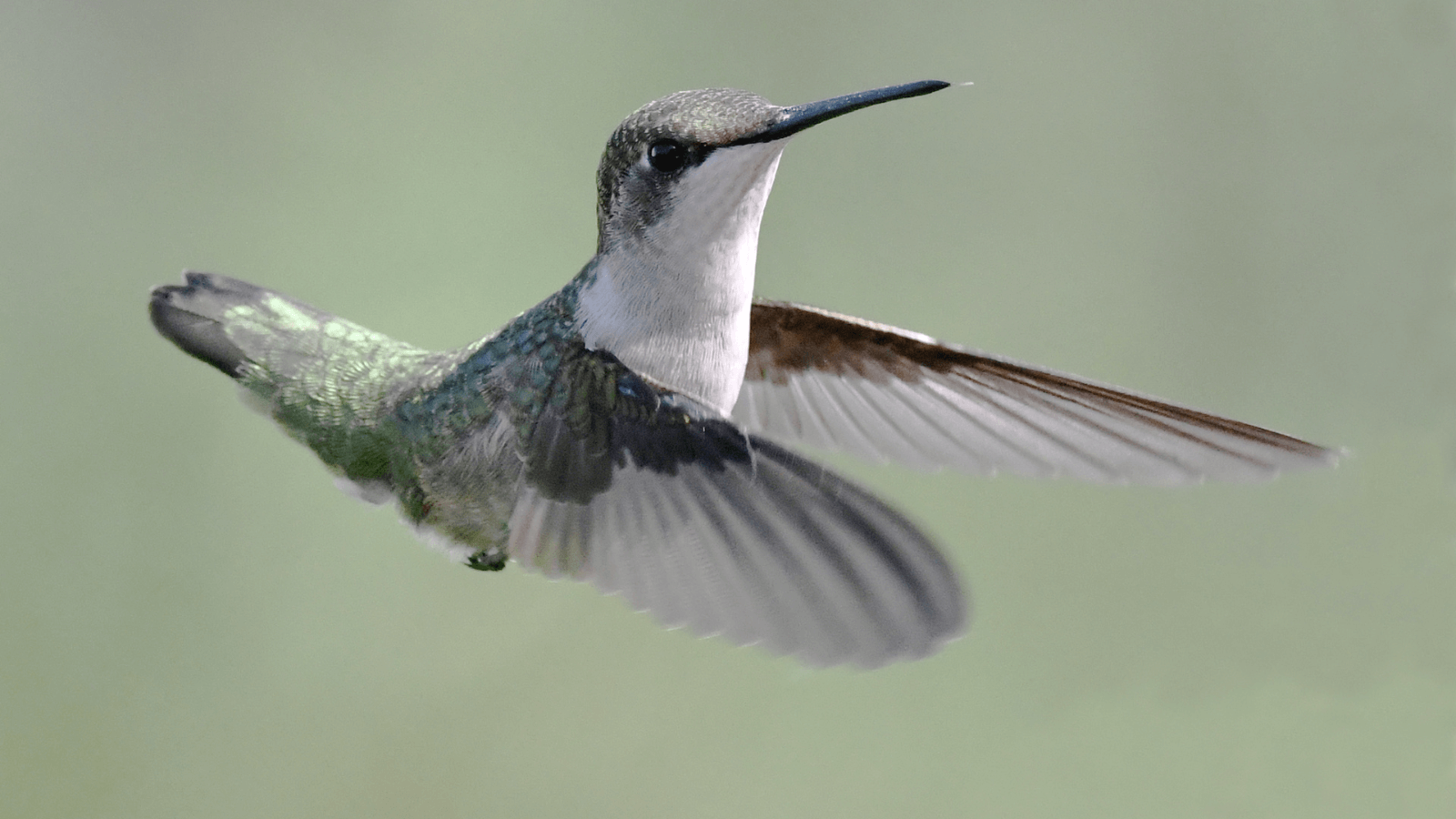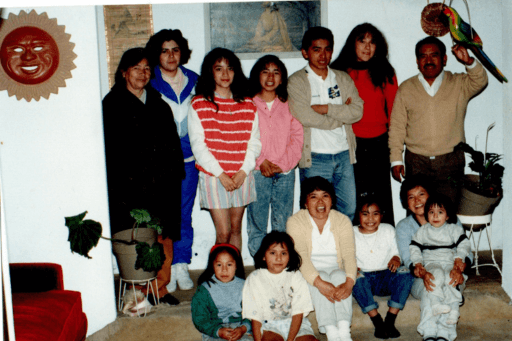The Hummingbird, the Marigold, and Indigenous Women's Perspectives

Mi abuelita stood in front of her colorful ofrenda for Día de Muertos. Her long black braid swayed to the rhythm of her favorite song, "El Sirenito," by Rigo Tovar. She sang along as she carefully moved around the jarritos filled with atole, casuelas full of mōlli, and photos of her family. The cempasúchil flower pinned on her hair, calaveritas de azucar, and the papel picador all glowed in the light from the flickering candles.
I carefully watched her and tried to make sense of the idea that my deceased ancestors would visit that night to feast on the aroma and warmth of the mōlli and pan de muerto. El Día de Muertos was a happy, sad, exciting, and scary experience for my six-year-old self. While the thought of seeing my great-grandfather come to feast on the mōlli frightened and saddened me, I enjoyed decorating my sugar-painted skulls and eating the homemade mōlli in the company of my family. My heart would beat faster when mi abuelita sat down to retell the Aztec legend of the cempasúchil and the hummingbird.

"It is a love story," mi abuelita began. Two young Aztecs, Xóchitl and Huitzilin, who grew up together, climbed Popocatépetl — the smoking mountain — daily to offer flowers to Tonatiuh, the Lord of the Sun. Xóchitl and Huitzilin swore to love each other forever, even beyond death. One day, Huitzilin was called to fight in a war, leaving his beloved, Xóchitl, behind. During combat, Huitzilin was seriously wounded and died on a dry summer day. When the news of his death reached Xóchitl, she climbed the smoking mountain and asked Tonatiuh to reunite her with Huitzilin.
Moved by her love, Tonatiuh let his rays fall on Xóchitl and turned her into a beautiful flower of intense yellow and orange tones — the cempasúchil flower, the flower of the dead. Mi abuelita would say that the lovers' ihiyoltl, or breath, rejoined nature. Their tonalli, or vital strength, converted to energy to be called as needed. Their yolia, the soul that animated their bodies, traveled to Mictlán, the land of the dead. After four years, the lovers' yolia finished their journey and rejoined ometeotl, the energy of the universe. One rainy day, a hummingbird, attracted by the aroma of the cempasúchil, perched on her leaves. Immediately, the cempasúchil opened and showed its beautiful orange color. It is said that the hummingbird was Huitzilin, who took the form of a bird to visit his beloved Xóchitl. As long as the cempasúchil flower exists and there are hummingbirds in the fields, the love of Huitzilin and Xóchitl will last forever, and cempasúchil will illuminate the journey for the spirits of the deceased.
Our visits to mi abuelita became less frequent as the violence in Mexico City discouraged my mom from vacationing there. Xóchitl, Huitzilin, and my memories of Día de Muertos began to fade from my mind as the years passed. In high school, I was introduced to Newton, Galileo, Einstein, and their European ideas on the nature and properties of matter and energy. “Energy can neither be created nor destroyed; it can only be converted from one form of energy to another,” Mr. Otis, my AP high school physics teacher, recited while striking his mad scientist pose. I unconsciously believed, as a 14-year-old, that undertaking studies in physics could explain how tonalli was converted to energy and clarify the unanswered questions from my childhood.
The Bill and Melinda Gates Foundation changed my life when they awarded me a full scholarship to study physics at New Mexico State University (NMSU). As an undergraduate student, I set out to understand the origins of life in the universe. However, while researching planetary science and astrophysics, I began to appreciate Earth's circumstances and the natural processes that allow living organisms to exist. Drawn by Earth's physical processes and properties, I started a master's degree in geophysics at the University of Texas at El Paso (UTEP).
As a graduate student, I spent days carrying a ground conductivity meter through the shrubland of Rattlesnake Springs, New Mexico. While dodging the Ocotillos and Prickly Pear Cacti, I would glance over my shoulder just in time to catch a glimpse of rattlesnakes and hummingbirds moving away. The hummingbirds perching on the Ocotillos' bright red flowers reminded me of mi abuelita. By this time, mi abuelita's yolia had traveled to Mictlánre and joined ometeotl.

During those long hot days of fieldwork in the Chihuahuan Desert, the love story of Huitzilin and Xóchitl replayed in my mind. I wondered, what importance do stories about nature have in understanding humans' relationship with nature? How do traditions and different social identities reflect how people see nature? I wanted to know how people's traditions and stories frame environmental problems and how their values shape their perception of nature and ecological issues. After completing my M.S. in Geophysics, I pursued an M.A. in Rhetoric and Writing Studies (RWS) at UTEP to understand how my heritage shaped my scientific knowledge.
As part of my thesis in rhetoric, I examined the underlying values, beliefs, meanings, and knowledge about water sustainability issues in the El Paso-Rio Grande area of six scientists in agriculture, urban systems, groundwater systems, desert ecology, and traditional ecological knowledge. My interviews helped me understand the challenges scientists face in communicating water sustainability to people from different backgrounds and geographies.
Through my research, I learned how negotiations and agreements between states, nations, and decision-makers often marginalize the voices of minority groups, and this exclusion does not help resolve environmental issues effectively. The information helped inform the development of a video game focused on water issues in the El Paso-Rio Grande area.
Today, as I watch the House Sparrows flying over the big trees and scouting for seed in the concrete sidewalks of Revenwood, Chicago, a familiar warm feeling of connection fills my heart. The long relationship between humans and House Sparrows echoes the voice of mi abuelita, “Los pajaritos, las flores, y el ser human somos uno mismo. Y algún día llegaremos a hacer parte de la naturaleza.” Mi abuelita's stories constantly remind me of my connection with the Earth's ecosystems. The story of the cempasúchil and hummingbirds has held an essential place in my family heritage and transcended their mere mythical presence throughout the generation.
Mi abuelita's knowledge has shaped how I approach science and conservation. Throughout my life, I have been bridging my Indigenous and Western knowledge, and I have learned that conservation problems transcend the purview of a single culture, method, or discipline. As scientists and conservationists, we must be willing to embrace different ways of knowing and be open to viewing the world from perspectives that have been marginalized. Mainly, mi abuelita's story reminds me of how the absence of Indigenous women's perspectives and ways of knowing could limit our ability to understand and solve many conservation challenges holistically. Through my ABC Conservations and Justice Fellowship, I hope to help bring attention to the perspective of women who have been marginalized, helping to more effectively conserve hummingbirds and other birds, especially those in danger of extinction.
Glossary
Abuelita – an affectionate variation of the Spanish word for grandmother
Cempasúchil – marigold
Ofrenda – small alter, in this case to honor deceased ancestors
Jarritos – little clay pottery jugs
Atole – a traditional Mexican drink that's thickened with corn flour
Casuelas – clay pottery pots
Mōlli- nahuatl word meaning "sauce"
Papel picador – a traditional Mexican decorative craft made by cutting elaborate designs into sheets of tissue paper
Calaveritas de azucar – sugar skulls



















































